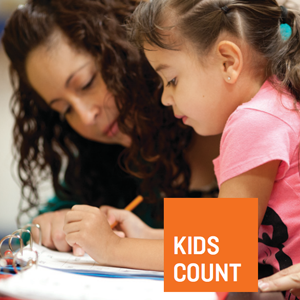
The latest numbers from the Annie E. Casey Foundation’s 2013 KIDS COUNT Data Book finds mixed results for the nation’s youth — while health and education figures have improved since 2005, many economic and family wellbeing factors diminished in subsequent assessments.
According to the Foundation, the number of children living in poverty in the United States jumped from 19 percent in 2005 to 23 percent in 2011. Furthermore, the new data indicates that same year, about 23.7 million U.S. children lived in homes where parents lacked steady employment — a sum that represents about 32 percent of all youth in the nation.
Similarly, the report found more children living in single parent homes in 2011 than in 2005 — a number that increased from 32 percent of the nation’s youth populace to 35 percent over the six year period. Additionally, about 8.6 million children, from 2007 to 2011, were found to be living in areas with high concentrations of poverty.
However, the new report also chronicled lower rates of children without health insurance and teens that abused alcohol or drugs, in addition to fewer babies being born at low birth rates. Similarly, the report finds more children attending preschool and more teens graduating from high school, with more children proficient at reading and math than they were at the midpoint of the 2000s.
In terms of economic wellbeing, Midwestern states such as the Dakotas, Wyoming and Nebraska ranked the highest, while southern and southwestern states such as New Mexico, Nevada and Mississippi posted the lowest scores.
Northeastern states, in particular those in New England, posted the highest educational ratings, while Nevada, New Mexico and Mississippi were found to have the worst. Regarding family and community rankings, states such as New Hampshire, Utah and Vermont had the best showings, while states like Texas, Louisiana and Arizona rounded out the bottom five. Maine posted the highest overall child health ranking, while Montana scored the lowest.
In terms of general child wellbeing, the foundation listed New Hampshire, Vermont, Massachusetts, Minnesota and New Jersey as the best, while New Mexico, Mississippi, Nevada, Arizona and Louisiana fared the worst.
“Research clearly indicates that one of the most cost-effective strategies is to reach the highest-risk kids in their earliest years,” the report concludes. “Smart investments in programs and services with a proven record — such as those that help low-income parents develop stronger, more nurturing relationships with their infants and toddlers and high quality early care and education programs that provide stimulating environments and activities for developing young minds — can expand the opportunity for children to reach their full potential, benefiting us all.”



























